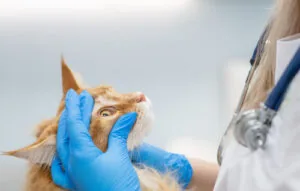Microchips for Our Pets 101

Microchips for Our Pets 101
Losing your pet can be a traumatic and even tragic event. Conscientious pet guardians protect their pets with collars and ID tags. Unfortunately, collars and ID tags are not foolproof and dogs and cats can still get lost. Collars can break or fall off, leaving your beloved pet among the countless, unidentified lost strays at animal shelters, with the true tragedy being the fact it can easily be prevented with the use of microchips.
What are Microchips?
A microchip is a permanent method of electronic identification. The chip itself is very small – about the size of a grain of rice – and is implanted subcutaneously (just under the skin) between the shoulder blades at the back of your pet’s neck. Each chip has a unique number that is detected using a microchip scanner. The microchip number is recorded on a microchip database registry with details about the animal and owner.
How Do Microchips Work?
Microchips won’t transmit your pet’s location, though you can get GPS collars that will. Nor do they contain your furry buddy’s medical records, although that is possibly something that could happen down the road with advanced technology. Instead, chips contain a unique ID number, which can be read with special scanners. That number is tied to your records and account in the chipmaker’s database. If your furry friend is taken to a shelter or animal clinic, that microchip may be the only thing linking you together.
Is Microchipping Painful?
Microchipping is a quick (only takes a few seconds), safe and simple procedure and causes little discomfort. Some puppies and kittens may flinch or yelp as the chip is implanted, however the pain is minimal and short-lived and most animals will forget about it very quickly. Microchipping is very important for reuniting lost pets with their owners. Should your pet go missing you are far more likely to be reunited if he or she is microchipped. The benefits of microchipping in terms of identifying a lost animal and reuniting them with their owner far outweigh any minimal, momentary discomfort.
Common Reasons Pets Get Lost
Many pets become lost because they escape from the yard or run outside when a door opens. This is especially true during holidays where loud noises, social gatherings, and unfamiliar faces are common. Even during thunderstorms, many pets can become frightened and run away during these situations in an attempt to escape the noise.
Other common instances where pets go missing include emergencies such as house fires and automobile accidents. A pet who has a microchip is much more likely to make it back home than one without this identification.
Register and Update
It is important to note that a microchip will only be effective if it is registered and contains up-to-date contact information. When you microchip your pet, the vet will give you information to register the microchip with a nationwide registry. You will then be asked to register the microchip and include your most up-to-date contact information. If you do not register and input your information, the microchip is essentially useless as the microchip will not be connected with information to help your pet be returned to you. If your information changes, be sure to update your pet’s profile immediately.
Share This Post
Recent Posts
About Shallowford Animal Hospital
Shallowford Animal Hospital and The Pet Spa at Shallowford are dedicated to the exceptional, compassionate care your pet deserves. Pets hold a very special place in our families, and we treat yours like our own.



